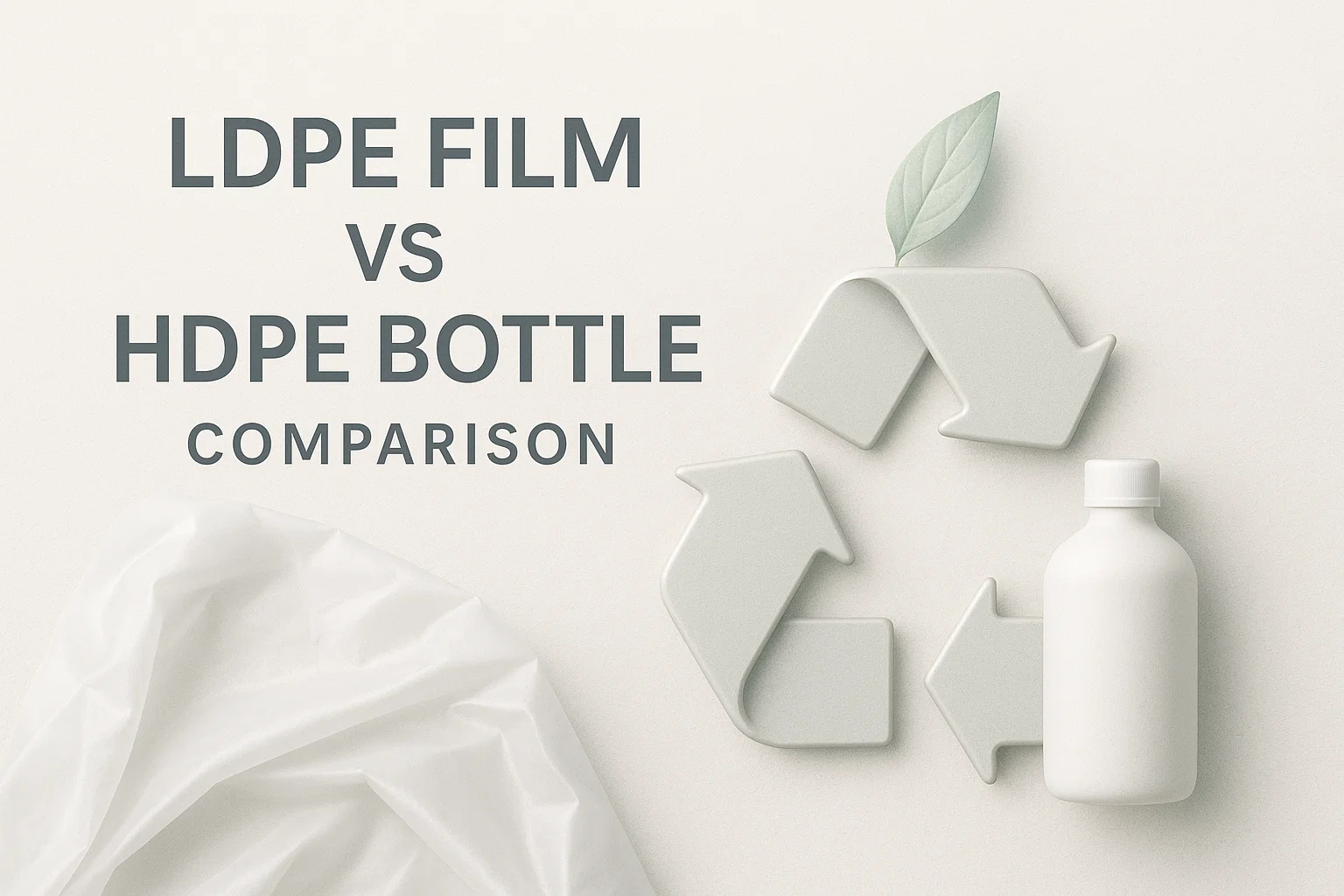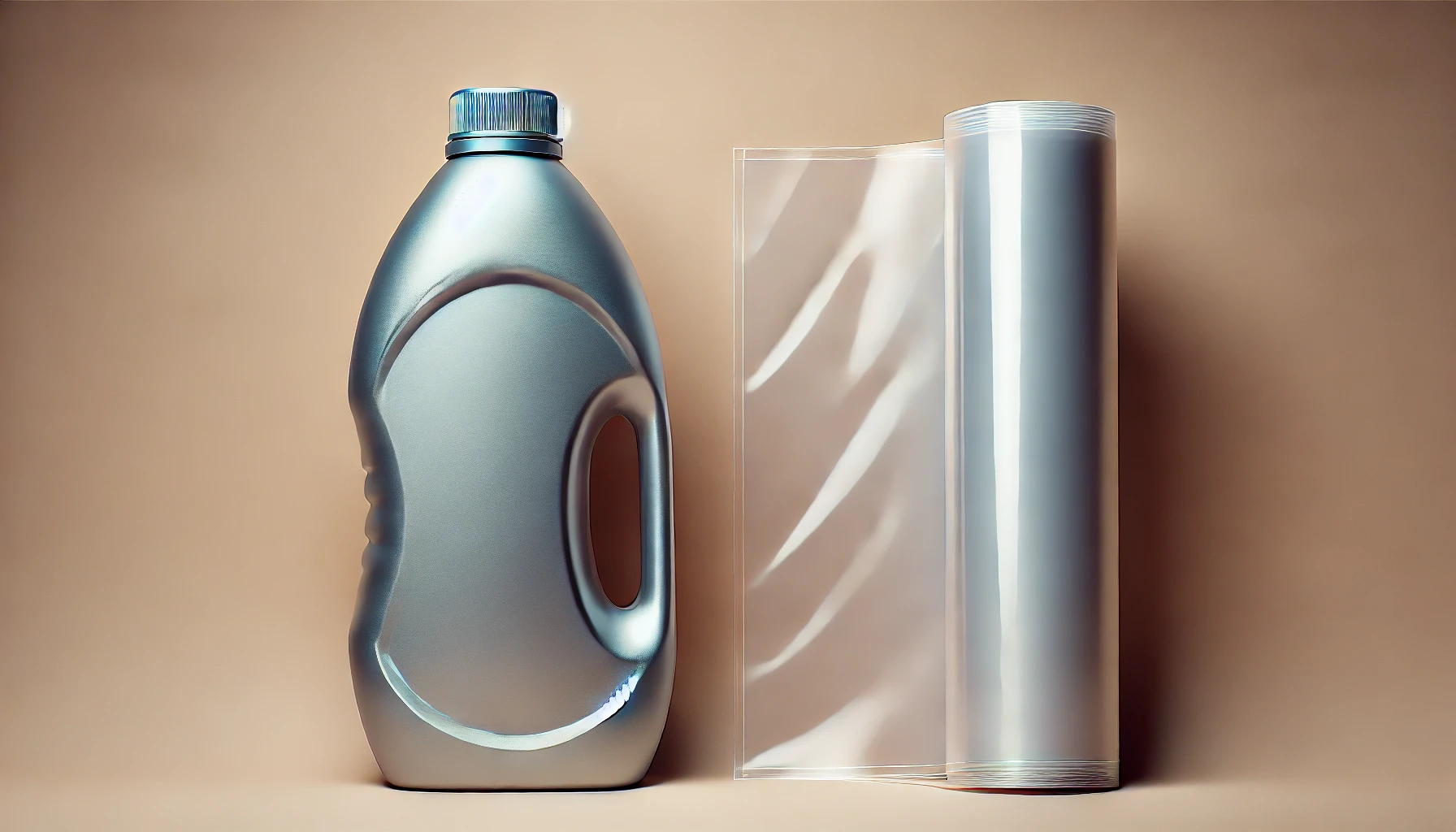LDPE vs. HDPE: 5 Key Similarities and Differences — Energycle Machine

LDPE vs HDPE sits at the heart of many decisions for professionals and buyers in the plastics and recycling industry. Understanding the core differences and shared qualities between Low-Density Polyethylene (LDPE) and High-Density Polyethylene (HDPE) ensures that the right material is chosen for every application. This guide brings clarity and actionable insight to help you select, process, and recycle polyethylene efficiently — all informed by current industry research and standards.
[1]What Is Polyethylene? LDPE and HDPE Basics
Polyethylene is a versatile thermoplastic polymer produced through ethylene polymerization. The two major forms — LDPE and HDPE — appear in everything from packaging films to construction pipes. Their distinct physical and chemical profiles shape how they’re sourced, used, and recycled.
Shared Strengths: Similarities Between LDPE & HDPE
1. Chemical Resistance
Both LDPE and HDPE resist acids, bases, and solvents. This reliability is why they’re chosen for chemical containers and food packaging.
2. Safety for Food Contact
LDPE and HDPE are approved for direct contact with food, supporting packaging, bottles, and consumer goods.
[1]3. Durability
Neither polymer easily degrades under normal environmental conditions. Their long service life supports use in outdoor and industrial settings.
4. Recyclability
Both resin types are recyclable, though processing methods differ. Dedicated recycling lines can handle films, bottles, and rigid goods.
5. Versatility
From shrink wrap and grocery bags to industrial containers, both LDPE and HDPE adapt to a wide range of product applications.
[1]Crucial Differences: LDPE vs HDPE
1. Density & Strength
LDPE: Lower density (0.910–0.940 g/cm³), flexible, often used for films and bags.
HDPE: Higher density (0.941–0.965 g/cm³), stiff and strong, preferred for containers, pipes, and large parts.
2. Temperature Resistance
HDPE withstands higher temperatures (up to 120°C), ideal for hot-fill packaging and drainage pipes. LDPE has moderate heat resistance, suitable for cold and room-temperature storage.
3. Transparency
LDPE is nearly transparent, making it suitable for packaging where product visibility matters. HDPE is typically opaque, supporting building materials and industrial applications.
4. Production & Processing
LDPE is manufactured under high pressure and temperature; HDPE is produced via lower pressure processes (Ziegler-Natta or metallocene catalysts). These differences impact crystallinity and strength.
5. Environmental Impact & Recycling
Both materials can be recycled, yet the methods and energy consumption differ. HDPE recycling is commonly more efficient due to widespread collection programs. LDPE recycling has improved; dedicated film recycling lines can turn waste into new products. Consider the full supply chain to understand impacts on cost, energy, and circularity.
Recyclability: Choosing the Right Equipment
LDPE vs HDPE recycling requires targeted machine solutions. Whether handling film, bottles, or rigid plastics, the right plastic recycling equipment from Energycle Machine enables efficient sorting, washing, and pelletizing.
- LDPE Film Recycling Lines: Specialized for thin flexible films, with steps for shredding, washing, drying, and pelletizing.
- HDPE Bottle & Container Lines: Built for rigid plastics, combining grinders, float-wash tanks, and densifiers.
- Mixed Polyethylene Sorting: Advanced sensor-based sorters and manual pre-sorting maximize recovery and material purity.
Visit Energycle’s homepage for more on machine selection, capabilities, and performance metrics.
LDPE vs HDPE: Pros & Cons Chart
LDPE Pros
- Flexible & easy to process
- High transparency
- Good chemical resistance
- Safe for food contact
- Recyclable (with increasing rates)
LDPE Cons
- Moderate strength
- Less heat resistant
- Film recycling infrastructure is developing
HDPE Pros
- High strength & rigidity
- Excellent chemical resistance
- Wide range of recycling programs
- Suitable for high-temperature applications
HDPE Cons
- Opaque
- Stiffer; can crack under stress
- Potentially higher manufacturing energy use
Decision Guide: Selecting LDPE or HDPE for Your Project
- Need flexibility and transparency? Choose LDPE for films, bags, and flexible sheets.
- Looking for high strength or heat resistance? Opt for HDPE in bottles, containers, piping, and outdoor structures.
- Targeting recyclability? Both can be recycled, but HDPE collection is more common. Explore dedicated LDPE recycling lines for film waste.
- Environmental goals? Consider recycled-content options and ask about closed-loop systems.
Consult Energycle’s machine portfolio for tailored solutions or reach out for advice on custom recycling setups.
Expert Insights & Industry Sources
For detailed standards, processing parameters, and up-to-date recycling statistics, reference:
These sources offer guidelines on food safety, recycling protocols, and performance specifications for LDPE and HDPE in North America and globally.Summary
For buyers and professionals in plastics and recycling, understanding LDPE vs HDPE supports better sourcing, application design, and sustainability decisions. Both offer excellent performance — careful selection ensures products meet regulatory standards, cost and recyclability needs, and final user requirements. If considering equipment upgrades or new recycling lines, review Energycle Machine’s solutions or visit the homepage for more details.



